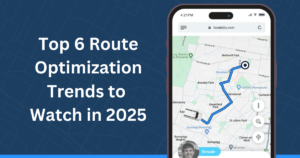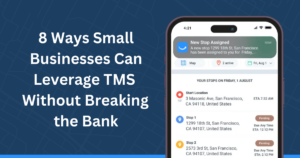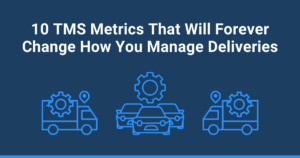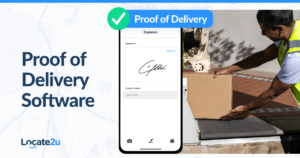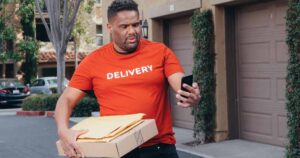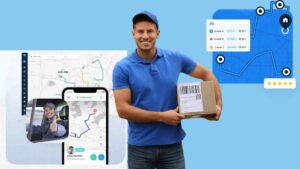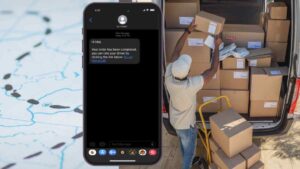
Last-mile delivery depends on clear communication. But what happens if there is a breakdown in clear and effective communication?
It means missed updates, frustrated customers, and late deliveries.
And if you don’t address this immediately, your business’ reputation might be on the spell.
Without a strong communication system, your business risks losing time, money, and trust. The good news is that the right strategies can tackle these challenges.
Here’s how to fix communication gaps and keep your last-mile operations running smoothly.
What is Last-Mile Delivery?
Last-mile delivery is the final step in the supply chain, where goods move from a distribution center to the customer’s doorstep.
It’s the most critical and expensive stage because it directly impacts customer satisfaction and business reputation.
It’s also the most transparent part of the delivery stage. Customers want to know when they can expect their parcel so they can call your business nonstop for answers.
If you provide clear and up-to-date information about when and where their parcel is, you can avoid frustration and be more efficient.
Why Your Business Needs Fast and Effective Last-Mile Delivery
Speed and reliability in last-mile delivery are no longer optional; they’re expected. Thanks to Amazon, which has set the bar high, customers want faster deliveries, the same day they order.
A well-optimized last-mile process improves customer experience, increases repeat business, and keeps operational costs in check.
Delays and miscommunication can cause dissatisfied customers and lost sales.
But you don’t have to be Amazon to keep your customers happy. Some software can help you with this, and it won’t cost an arm and a leg.
Why is Last-Mile Delivery So Expensive?
If your vehicles make deliveries on the road daily, you know how expensive the last-mile delivery process is.
The main culprit is fuel costs—the more time you spend on the road, the higher your expenses. But for the trucks to move, you must also pay for labor.
Several factors drive up last-mile costs:
- Rising fuel prices and wages impact delivery budgets.
- Choosing inefficient routes and poor planning increase mileage and delays.
- Same-day and next-day delivery put pressure on logistics.
- Missed drop-offs add costs for redelivery and lost inventory.
Now, let’s dive into 15 ways to fix communication issues and how you can streamline your last-mile delivery.
15 Ways to Overcome Communication Challenges During the Final Mile
1. Use Real-Time GPS Tracking
Keep everyone informed with live updates on driver location and estimated arrival (ETA) times. When customers know their delivery window, they can plan to be at home or the office to avoid missed deliveries.
What frustrates customers the most is when there is either no delivery window or a large one that traps them from staying at the address for long periods.
With real-time tracking, customers can plan their day better and ensure they don’t miss any delivery.
2. Automate Customer Notifications
Send automatic texts or emails about delivery status to reduce customer inquiries.
Some businesses also use geofencing to automatically trigger a message sent to customers when the driver enters a certain radius of the given address.
3. Provide Drivers with a Mobile App
Equip drivers with an app for route optimization, digital signatures, and instant updates.
Real-time tracking helps give customers live insight into where their driver is and how many stops he or she makes before receiving their parcel.
Route optimization also helps to improve efficiency between managers and drivers by taking the most efficient route despite heavy traffic or rain.
4. Implement Two-Way Communication
Allow customers to communicate with drivers for real-time instructions or special requests.
Sometimes, a customer can no longer be at the address and wants to leave special instructions on where to put the parcel. This is helpful as the driver can respond and send photos of proof of delivery.
5. Use Route Optimization For Efficiency
Adjusting routes based on traffic and weather conditions can minimize delays. When your customers know you’ll be on time, you’ll be able to retain more customers.
Route optimization also helps to save on fuel money and labor costs. You spend fewer days figuring out the best route and planning your schedules.
6. Offer Live Customer Support
Provide immediate assistance for customers experiencing delivery issues. No customer wants to wait 24 hours for their issue to be resolved.
If you don’t offer them a platform to express their frustration, they will criticize your business on social media in public forums.
7. Enable Contactless Delivery Options
Give customers flexibility with secure, contact-free drop-offs. Not all customers want or can interact with delivery drivers.
Some customers are disabled or too old to come to the front gate. Make sure there is space for them, too.
8. Standardize Delivery Protocols
Ensure drivers follow precise procedures for handling special deliveries or failed attempts.
Train your drivers to be open to respond and resolve problems quickly. When there are clear delivery protocols in place, you know your drivers will handle special deliveries with the same level of efficiency as all the other.
9. Integrate Delivery Software with Your Business Systems
Synchronize orders, inventory, and customer data for a seamless process. If you want to ensure each delivery is seamless, synchronize these processes to prevent the supply chain from being disrupted.
10. Monitor Driver Performance with Ratings
Track reliability, efficiency, and customer feedback to improve service. If you have more data about how your drivers respond to customers, it’s easier to teach them to improve or applaud them for a good job.
11. Allow Customers to Reschedule Deliveries Easily
Reduce failed drop-offs with flexible rescheduling options. When customers are given options to reschedule quickly, they will return for more of your service.
Some delivery companies clearly state in their policies that an extra fee is involved when a delivery is missed. However, the rescheduling process is also not user-friendly. Make sure you make it as easy as possible for your customers.
12. Use Smart Lockers for Secure Deliveries
Provide pickup locations to reduce last-mile complexities. Many customers prefer the freedom to pick up their orders from a locker near their homes.
These are ideal for people who can’t work from home or take off to ensure they are at the address when the parcel arrives.
13. Train Drivers on Customer Service
Improve the delivery experience by coaching drivers on professional communication. Your service might be excellent, but when one driver is rude to the customer, your entire delivery effort suffers.
Train your delivery drivers how to respond to rude customers so they know how to handle certain difficult situations.
14. Gather Customer Feedback Regularly
Use surveys or ratings to identify communication gaps and make improvements. Customer feedback helps you see a trend and understand where it’s coming from before it escalates into a bigger problem.
15. Analyze Delivery Data for Continuous Improvement
Identify trends and fix recurring issues to enhance last-mile efficiency. You can never stop improving your last-mile delivery experience. Customers change and expectations, too.
Communication Challenges and How To Overcome It
Communication challenges in last-mile delivery can make or break your business.
Investing in the right tools and strategies ensures faster, smoother, and more customer-friendly deliveries.
Implement these 15 solutions, and watch your delivery operations improve one package at a time.
About the author
Mia is a multi-award-winning journalist. She has more than 14 years of experience in mainstream media. She's covered many historic moments that happened in Africa and internationally. She has a strong focus on human interest stories, to bring her readers and viewers closer to the topics at hand.





